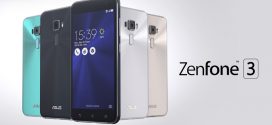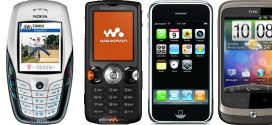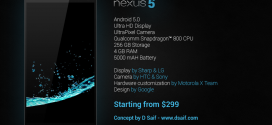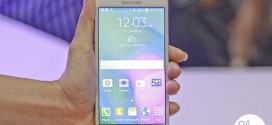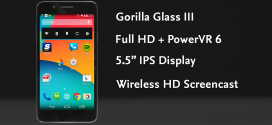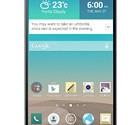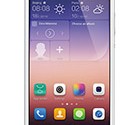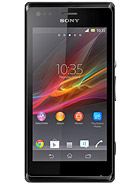 Today we’ll be taking a brief look at the Sony Xperia M. First off, there are many versions of this phone – while some only differ a bit in the types of networks they use, others have more substantial differences to them. To clarify a bit: there’s the C1904 and the C1905 – both these phones are Single-SIM devices with minor differences as far as networking goes – but then there’s also the C2004 and C2005 versions – they have the similar networking differences to the previous ones, but these versions of the phone are Dual-SIM phones.
Today we’ll be taking a brief look at the Sony Xperia M. First off, there are many versions of this phone – while some only differ a bit in the types of networks they use, others have more substantial differences to them. To clarify a bit: there’s the C1904 and the C1905 – both these phones are Single-SIM devices with minor differences as far as networking goes – but then there’s also the C2004 and C2005 versions – they have the similar networking differences to the previous ones, but these versions of the phone are Dual-SIM phones.
What can be said about the Sony Xperia M? Well, this is a pretty good device for a really interesting price. Ah but lately, I’ve said that about a lot of phones, or so you’d think. Truth be told I take a while before selecting a device to review – mostly before a lot of things I find are needed to be taken into consideration. If you’ve not realized it until now, I like to judge phones by this next criteria: what they offer against what they cost – if the result is positive, or at the very least equal, I go for it. The Sony Xperia M falls into the better category, and you’ll come to see it my way in just a minute.
SUMMARY
The Sony Xperia M offers a lot of great features, but it’s not the best of phones out there. However, with the price this phone is asking, you can easily see why those limitations are there ( considering these new technologies they put into the top-smartphones are really expensive right now ). Overall, having the configuration that the Sony Xperia M has is sort of the best solution you could come to. There are other cheaper phones out there I might give as an example, but most of them suffer from the same problem: they add and overly strong ( and thus expensive ) component, and then cut the budget from all the other parts in order to fit the price and not have to increase it that much. Personally, I find this a bad marketing tactic as you have to make an overall bad phone ( with too many weak features ) in order to add just a single strong one. It’s better that you do what they did with the Sony Xperia M – don’t go 100% strength on one component and go 25% on the rest – instead this phone goes about 75% on all of them ( 50% at the lowest, I’d say ).
GENERAL
As I said, while there are minor networking differences between the different versions of this phone, all versions use standard GSM networks. The Dual-SIM is optional, if you truly desire it. This phone has been available for a while but I feel it should receive a bit more attention than it has – if you’re curious, it’s been out since August.
BODY
The Sony Xperia M isn’t a very large phone, sporting a 4.0 inch screen and using space quite effectively, this device is meassured at 124 x 62 x 9.3 mm ( or circa 4.88 x 2.44 x 0.37 in ) and it weighs in at circa 115 g ( or approximately 4.06 oz ).
DISPLAY
The screen of the Sony Xperia M isn’t the best out there, but it’s more than half-decent by my standard. This screen is of TFT quality and it has 16 million colors. With its 4.0 inches size it holds a resolution of 480 x 854 pixels and has a pixel density of approximately 245 pixels per inch. This phone’s display also supports multitasking of up to 4 simultaneous fingers. The Sony Xperia M’s screen is also protected, since it’s coated with a layer of Scratch-Resistant Glass.
SOUND
The audio quality of this device isn’t necessarily something to brag about, as the phone has no audio enhancements whatsoever installed on it ( it’s pretty much as default as it can be ). Now, again, it’s not that the Sony Xperia M has bad quality audio, but the quality of a phone equipped with audio enhancements is always WAY superior to the normal, and even an untrained ear can tell the difference.
MEMORY
The memory of this phone is pretty okay. The Sony Xperia M has 4 GB of internal storage space and that storage space can be expanded upon via the MicroSD card slot which can use any card of up to 32 GB. The RAM of this device, on the other hand, can be pretty bothersome for some people, as it is limited to just 1 GB. While it may be enough for now, with the continuous increase in demands from apps and games, one can only wonder for how long will 1 GB of RAM be enough.
DATA CONNECTION
The connectivity of this device is quite good. The phone is equipped with both GPRS and EDGE, it has more than decent internet speeds, it comes equipped with NFC and the phone also has Bluetooth v4.0 on it with A2DP and ANT+ as well. The WLAN of the Sony Xperia M is also quite something with Wi-Fi 802.11 a/b/g/n with Dual-Band, Wi-Fi Direct, DLNA and Wi-Fi Hotspot. This phone also has a MicroUSB v2.0 port on it as well, but with no MHL or something similar.
CAMERA
The camera on this phone is a pretty neat one. The Sony Xperia M comes with a main 5 MP camera that can also record video in 720p HD quality at irca 30 frames per second, but it also has a secondary frontal-mounted VGA camera ( this one doesn’t have overly impressive features. The features of the main camera include: autofocus, LED flash, geo-tagging, touch focus, image stabilization, HDR and panorama as well.
BATTERY LIFE
The battery of the Sony Xperia M is pretty good. This phone comes with a Li-Ion 1750 mAh battery that can allegedly sustain the phone for the following amount of time: 552 hours or 454 hours of stand-by in 2G and 3G modes, 10 hours and 18 minutes and 9 hours of talk-time for both 2G and 3G, respectively, and astonishingly enough: up to 39 hours and 24 minutes of continuous music play.
HARDWARE
The hardware found on the Sony Xperia M is pretty good. This phone comes equipped with a Qualcomm Snapdragon S4 Plus MSM8227 chipset, which holds a Dual-Core 1 GHz Krait processor and an Adreno 305 GPU as well. The hardware on this phone, while it may not be the best, it certainly should suffice for the next year or so in running most apps and a majority of games out there.
SOFTWARE
The software found on the Sony Xperia M is pretty good – this phone has Android OS v4.1 Jelly Bean pre-installed on it. It’s relatively disappointing to see that there is, as of yet, no official update available ( even though the phone can most likely handle it ), but if you’re not satisfied you can always choose the riskier unofficial route and manually update it.
FEATURES
Here are some of the features found on this phone: a bunch of sensors ( accelerometer, proximity and compass ), HTML5 for the browser, Stereo FM radio with RDS, GPS with A-GPS support and even Java through Java MIDP emulation. The messaging on this phone can be done through SMS ( with Threaded View ), MMS, E-Mail, IM and Push E-Mail. The Sony Xperia M is available in the following colors: Black, White, Purple and Yellow ( I think some of these are only available for the Single-SIM version of the phone ).
Here’s a brief list of what the Sony Xperia M is capable of doing:
- SNS integration
- Active noise cancellation with dedicated mic
- MP4/H.263/H.264 player
- MP3/eAAC+/WAV player
- Document viewer
- Photo viewer/editor
- Voice memo/dial
- Predictive text input
This concludes our little review of the Sony Xperia M. I tried touching the most important parts here and talking about everything as briefly as I could, without going into too many technical or boring details. I do hope it has proven somewhat enlightening to you all and that at the very least it offered you a bit of extra info about the device. If you enjoyed this phone and would like to purchase it, I can provide you with a link to a place I’ve found a better deal for it. Simply click HERE to get this device
.


